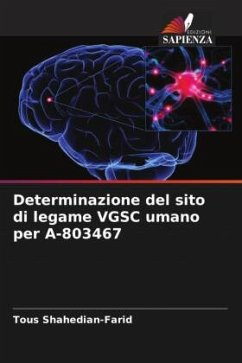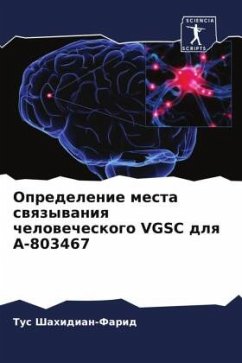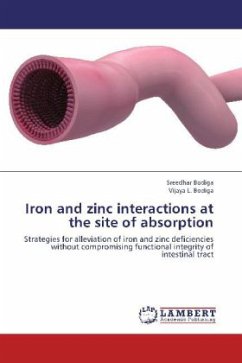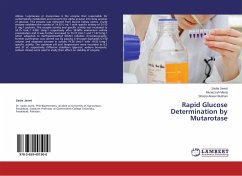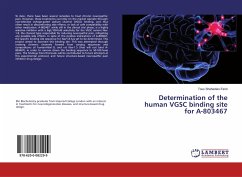
Determination of the human VGSC binding site for A-803467
Versandkostenfrei!
Versandfertig in 6-10 Tagen
27,99 €
inkl. MwSt.

PAYBACK Punkte
14 °P sammeln!
To date, there have been several remedies to treat chronic neuropathic pain. However, these treatments currently on the market operate through non-selective voltage-gated sodium channel (VGSC) binding, and thus often result in discomforting side effects, or lack of safe compatibility with other medication. A-803467, while still in the clinical trial phase, is a highly selective inhibitor with a 100-fold selectivity for the VGSC variant Nav-1.8, the channel type responsible for inducing neuropathic pain, mitigating any possible side effects. In spite of the positive implications of A-803467, th...
To date, there have been several remedies to treat chronic neuropathic pain. However, these treatments currently on the market operate through non-selective voltage-gated sodium channel (VGSC) binding, and thus often result in discomforting side effects, or lack of safe compatibility with other medication. A-803467, while still in the clinical trial phase, is a highly selective inhibitor with a 100-fold selectivity for the VGSC variant Nav-1.8, the channel type responsible for inducing neuropathic pain, mitigating any possible side effects. In spite of the positive implications of A-803467, the specific binding site sequence for Nav1.8 has yet to be determined. This project aimed to ascertain this binding site. This was attempted through creating chimeric channels formed from varying sequences and compositions of human-Nav1.8, and rat Nav-1.5 (that will not bind A-803467), in order to narrow down the binding sequence to 50-100 base pairs. The findings from this book will be contributed to future attempts at this experimental protocol, and future structure-based neuropathic pain inhibitor drug design.






